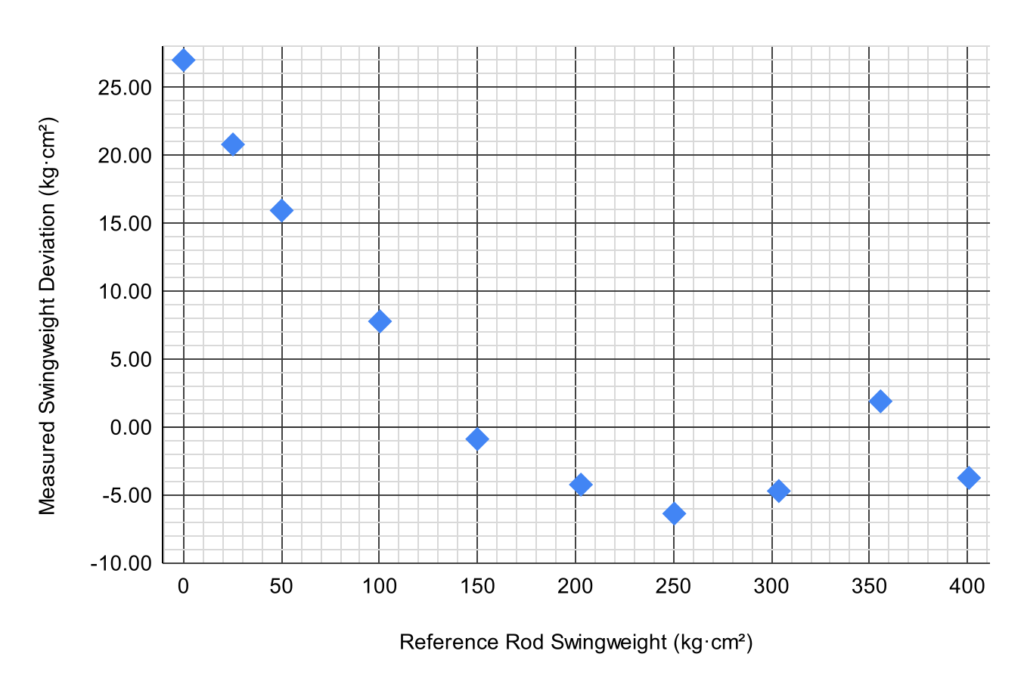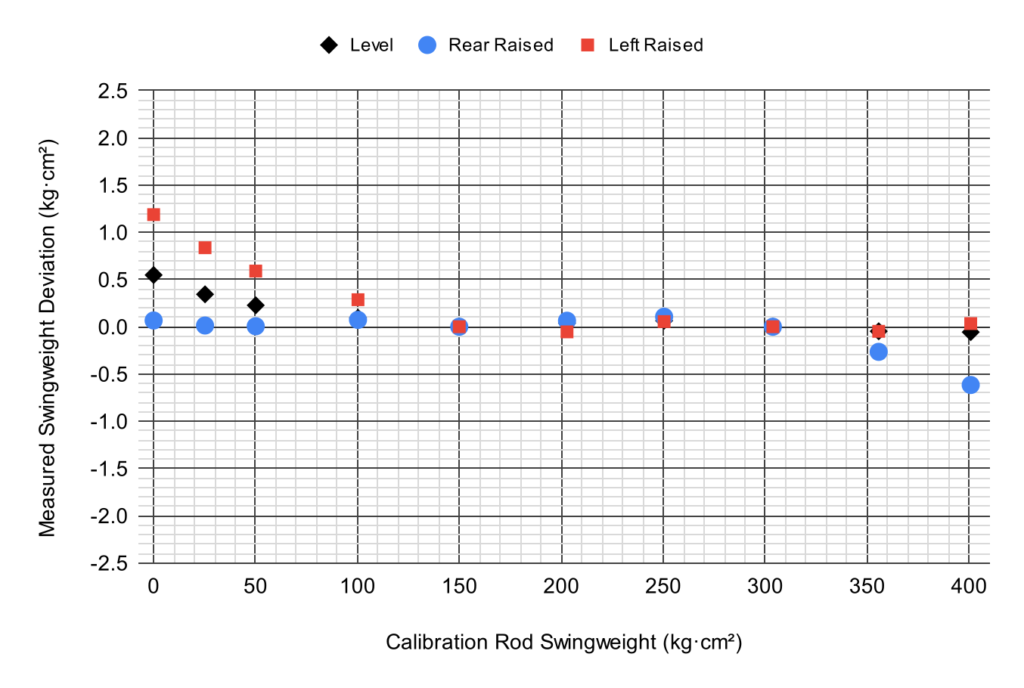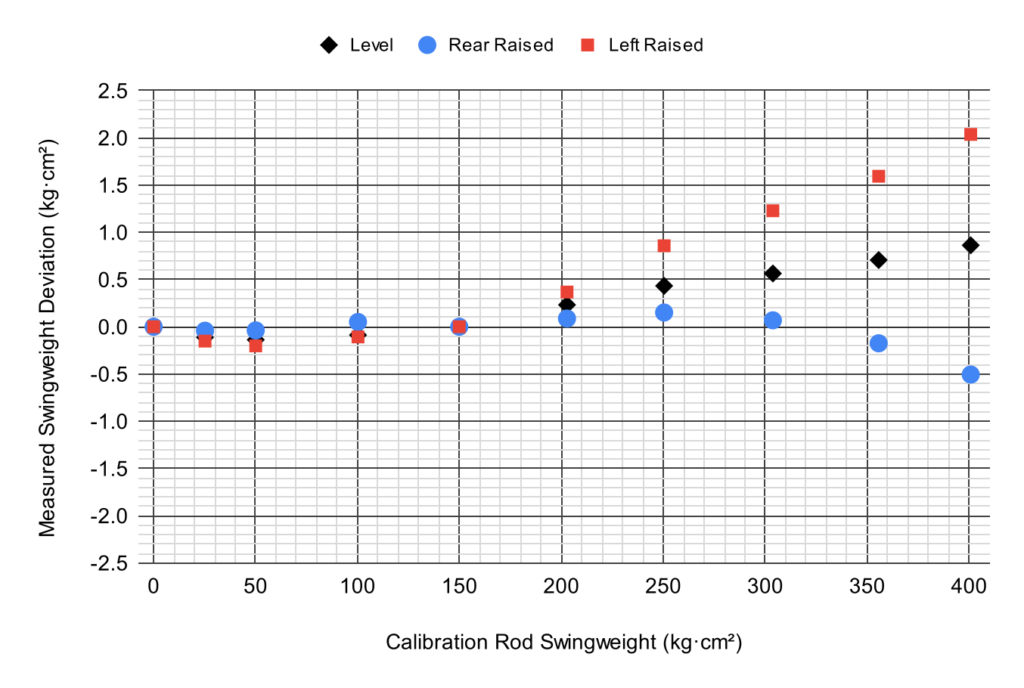Recently, I had the opportunity to test a Dunlop swingweight machine, so I measured the set of reference rods from the Briffidi SW1 Linearity Testing. I had previously seen data from an old Babolat RDC (Spurr) that showed significant non-linearity across the measurement range, but I expected the modern Dunlop machine to be better. The following data is from just one machine, and I hesitated to share it, but if I were any other tennis nerd without a competing product, I would have shared it without even thinking.
I verified that the Dunlop machine was calibrated and level. As describe in the SW1 testing, the reference rods were calculated from mass and length measurements. I measured the swingweight of each reference rod, in both orientations, on the Dunlop machine. The results are summarized in Table 1, and the deviation is plotted in Figure 1.
| Calculated (kg·cm²) | Mean Measured (kg·cm²) | Deviation (kg·cm²) |
| 0.00 (empty) | 27.0 | 27.00 |
| 25.21 | 46.0 | 20.79 |
| 50.07 | 66.0 | 15.93 |
| 100.23 | 108.0 | 7.77 |
| 149.89 | 149.0 | 0.89 |
| 202.74 | 198.5 | -4.24 |
| 250.37 | 244.0 | -6.37 |
| 303.71 | 299.0 | -4.71 |
| 355.61 | 356.5 | 1.89 |
| 400.75 | 397.0 | -3.75 |

Except for the outlier at ~400 kg·cm², there is a clear pattern to the deviation results. I don’t know enough about how the machine works to explain that outlier. The Dunlop calibration rod is marked 200±1 kg·cm², but there is significant deviation even there. It measured 204 kg·cm² on an SW1. There is both a shift due to the out-of-spec. calibration rod and significant non-linearity across the measurement range.
My goal is not to disparage the Dunlop machine, but I don’t mind pointing out that a big brand name or price tag doesn’t ensure greater accuracy. Even with the considerable inaccuracy, the Dunlop is still a useful tool. It looks and feels like a device you’d see in a professional setting, and the racket cradle is quite nice. Most importantly, it provided repeatable measurements, and that’s enough to match rackets. However, even at equal cost, I’d pick the SW1, as the accurate measurements (along with my spreadsheet) usually allow me to hit my target specs on the first try.



